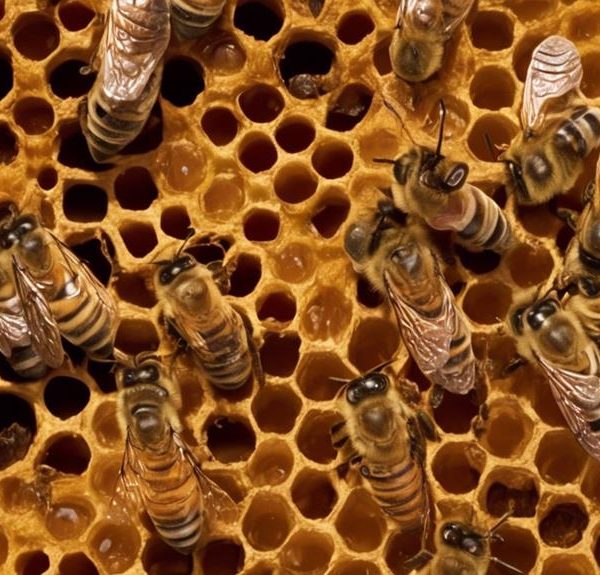Learn about the pivotal role of honey bees in our ecosystem and explore the intriguing debate – are they a true keystone species?
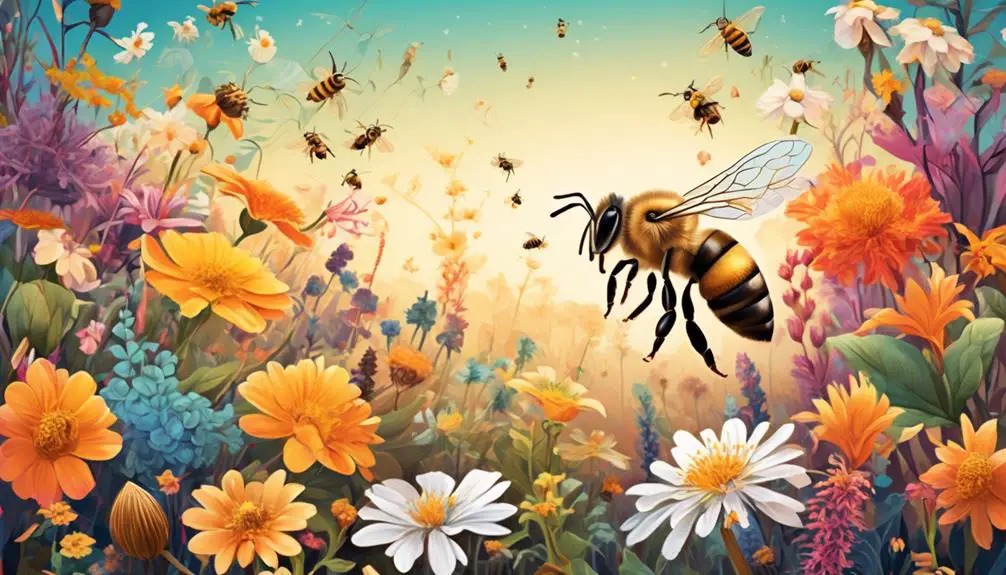
Are Honey Bees a Keystone Species
Have you ever contemplated the humble honey bee? They're more than just a producer of sweet nectar; they could be the lynchpin in our ecosystem.
Honey bees are often touted as a keystone species, a critical organism on which other species heavily depend. Their industrious pollination not only aids in the proliferation of diverse plant species, but also contributes to the survival of numerous animal species.
However, can we definitively classify them as a keystone species? That's a question worth considering, especially as their populations are increasingly under threat. There's a lot to unpack here, and the answer might surprise you.
So, let's take a journey into the world of these buzzing pollinators and explore their potential significance beyond the honey they provide.
Key Takeaways
- Honey bees play a crucial role as vital pollinators, contributing to biodiversity and food security.
- The decline of honey bee populations poses significant threats to ecosystem health and crop yields.
- Conservation efforts, such as planting bee-friendly flowers and avoiding harmful pesticides, are essential for preserving honey bee populations.
- Recognizing and protecting honey bees as potential keystone species is imperative for maintaining biodiversity and ecosystem stability.
Understanding Keystone Species
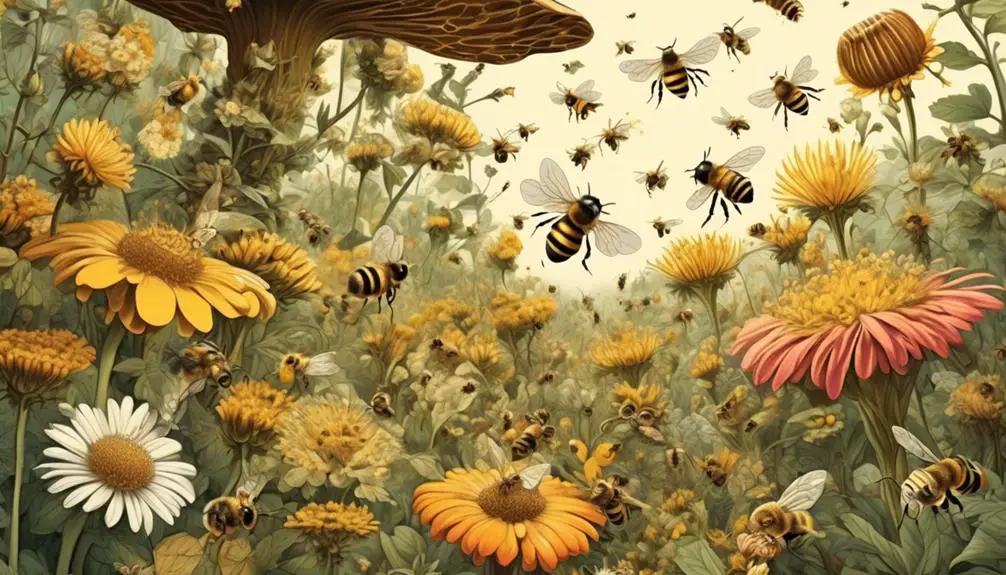
Before we delve deeper into the role of honey bees, it's crucial for you to comprehend what a keystone species is, as this concept forms the bedrock of ecological studies. A keystone species is an organism that holds a significant influence on its environment, far more substantial than its relative abundance or biomass would suggest. Imagine throwing a small stone into a pond; the ripples it creates are disproportionate to its size. Similarly, a keystone species, like the mighty grizzly bear or the humble honey bee, can cause ripple effects through the ecosystem.
These species maintain the local biodiversity, affecting many other organisms in an ecosystem, shaping their habitat, and directly influencing the health and balance of the community. They play a vital role in the way ecosystems function, and their removal can lead to significant shifts in the ecosystem, often to its detriment. That's why conservation efforts often focus on these keystone species. Understanding this concept will help you appreciate the profound impact honey bees, as potential keystone species, have on our ecosystems.
The Role of Honey Bees
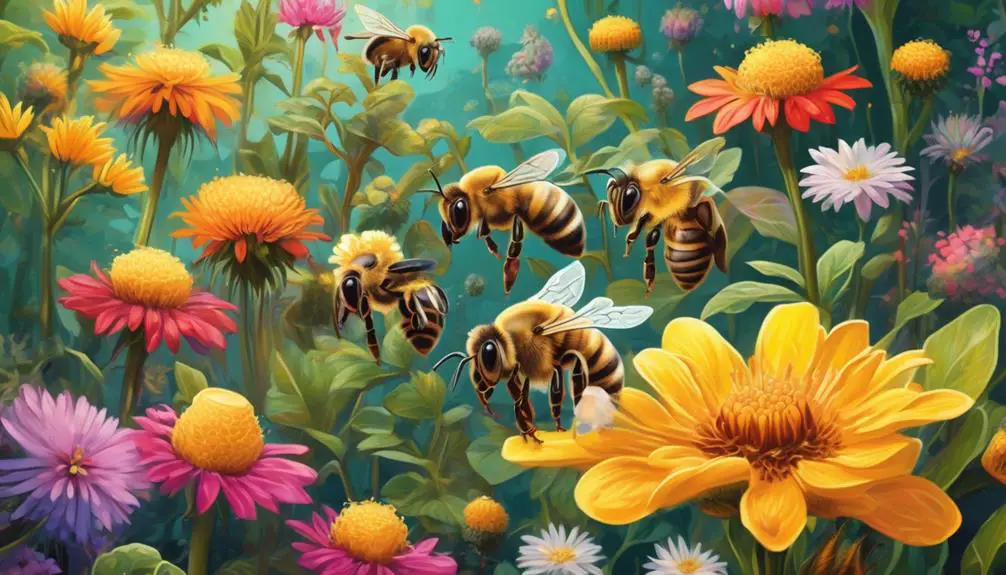
Diving into the world of honey bees, you'll discover they play a pivotal role not only in pollination but also in the overall health and diversity of our ecosystems. These industrious insects are vital pollinators, transferring pollen from the male parts of a flower to the female parts. This facilitates fertilization and leads to the production of fruits, seeds, and new plant growth.
You mightn't realize that honey bees are responsible for pollinating about one-third of the food we eat. They're essential for the successful growth of numerous fruit, vegetable, and nut crops. Furthermore, they contribute to the pollination of plants that make up the habitats of countless other species.
However, bees don't just aid in food production. They also contribute to the biodiversity of our ecosystems by enabling the reproduction of flowering plants, which serve as a food source and provide shelter for a host of different species.
In short, honey bees are crucial to our survival and the health of our planet. Their decline would have far-reaching repercussions on food security, biodiversity, and the structure and function of ecosystems. Hence, their preservation is a matter of urgency and importance.
Impact on Ecosystems
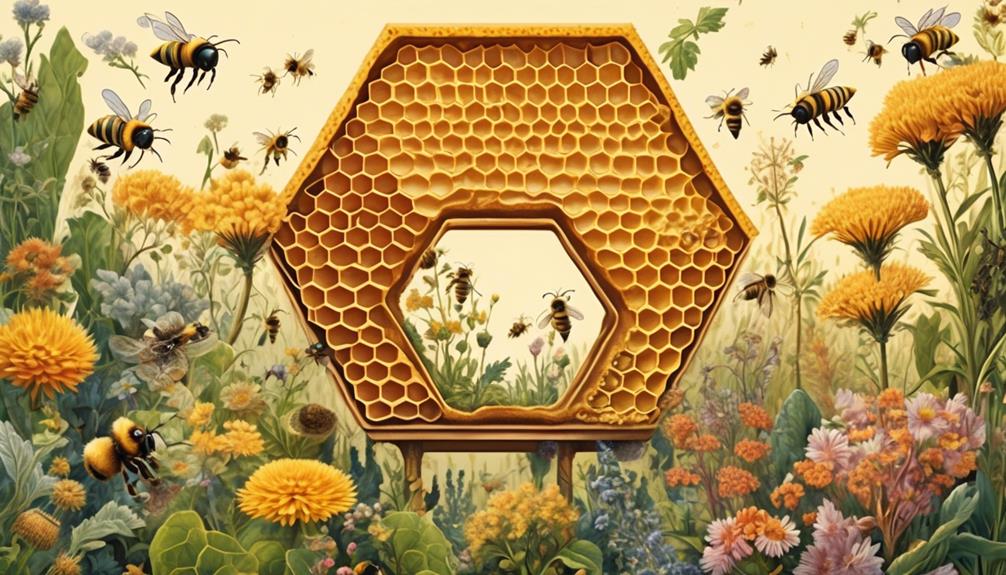
When considering the impact on ecosystems, it's clear that the role honey bees play goes beyond just pollination; they're truly instrumental in maintaining ecological balance. Not only do they help plants reproduce, but they also contribute to biodiversity by creating habitats for other species.
Take a look at the table below:
Impact | Example | Outcome |
|---|---|---|
Pollination | Flowering plants | Increased plant reproduction |
Biodiversity | Creation of habitats | Supports a variety of species |
Food production | Crops reliant on bees for pollination | Higher yields of fruits, vegetables, nuts |
From this, you can see that honey bees' pollination work enables the reproduction of a wide variety of flowering plants. This, in turn, fosters biodiversity by creating habitats and providing food for other species. It's also interesting to note that many of our food crops are reliant on bees for pollination, which directly affects our food production. Without bees, we'd see a significant drop in the yield of fruits, vegetables, and nuts.
Threats to Honey Bee Populations
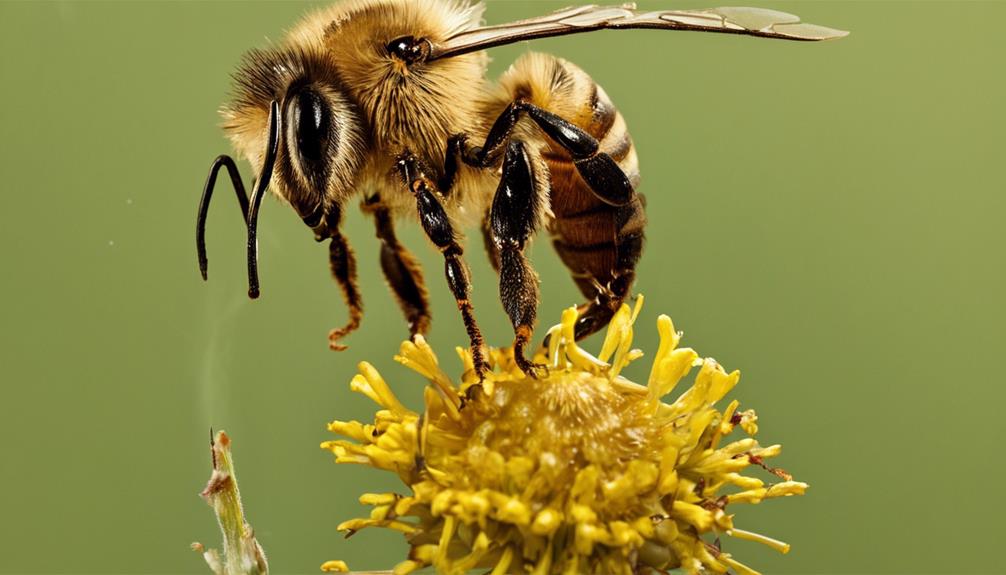
Despite their crucial role in ecosystems, honey bee populations face a myriad of threats that could drastically undermine biodiversity and food production. You must understand that these threats are often human-induced, with habitat loss, pesticide exposure, and climate change being the prime culprits.
Habitat loss, driven by urban development and intensive farming, deprives bees of the diverse range of flowers they need for nutrition. This nutritional stress can weaken their immune system, making them susceptible to diseases and parasites. Moreover, you mightn't realize that the widespread use of pesticides can have a devastating impact on honey bees. Certain pesticides, known as neonicotinoids, are particularly harmful as they can contaminate nectar and pollen, leading to impaired bee learning, foraging, and reproductive success.
There's also the looming threat of climate change. Rising temperatures can disrupt the synchronization between bees and the flowering plants they depend on, contributing to bee declines. Additionally, extreme weather events can cause bee mortality.
In short, the threats to honey bees are complex, interrelated, and serious. They call for urgent actions to ensure the survival of this keystone species.
Conservation Efforts for Honey Bees
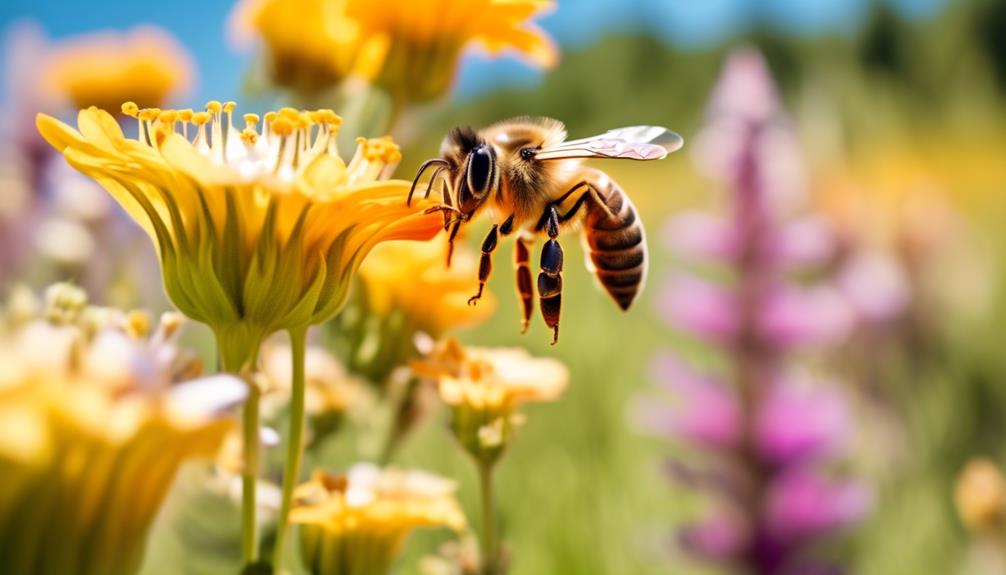
Given the significant threats facing honey bees, it's crucial that we understand and implement effective conservation strategies to protect this vital species. These bees are responsible for pollinating a large portion of our food crops and their decline could have disastrous effects on global food security.
Efforts to conserve honey bees are multi-faceted. One approach involves improving their habitat. You can plant wildflowers and other plants that bees love in your garden. Avoiding the use of pesticides or choosing bee-friendly ones can also make a big difference.
Beekeeping practices are also being refined to protect bee health. By choosing to support local, organic honey producers, you're promoting sustainable beekeeping.
Research is another vital part of conservation efforts. Scientists are studying the bee's behavior, genetics, and the diseases that afflict them in order to develop targeted strategies for their protection.
Legislation can also play a role in bee conservation. Advocating for policies that protect bee habitats and regulate the use of harmful pesticides is another way you can help.
Conclusion
So, you see, honey bees indeed play a crucial role as a keystone species. Their impact on ecosystems is vast, pollinating numerous plants and supporting biodiversity.
However, they face significant threats demanding urgent attention. Through concerted conservation efforts, you can help ensure their survival and, in turn, the health of our ecosystems.
Remember, every action counts, so let's all strive to protect these vital little creatures.

